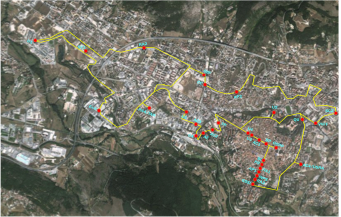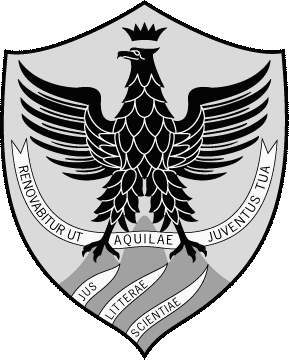The core of the INCIPICT Project is the construction of an experimental optical network to build a MAN – Metropolitan Area Network – that consists in an Optical Ring to connect the main and the most important sites of L’Aquila City.
MAN - Metropolitan Area Network

The Optical Ring involves the use of some experimental technologies that are designed to test new optical systems (in particular long-reach PON, software defined optics, to name only the main ones), new networking techniques (implementation and development of advanced Networking-level control plan:
- Software Defined Networking (SDN) / OpenFlow, integration networks / services for the areas of cloud computing, high-capacity and reliability;
- Experimentation with different communication architectures: GPON, EPON, XG-PON, 10G-EPON, TDM / WDM PON, OFDMA (Orthogonal Frequency-Division Multiple Access) / OCDMA (Optical Code-Division Multiple-Access) PON, wired-wireless integration, IPv6, Open Access PON;
- Development of solutions: innovative Energy-efficient PON, OFDMA / OCDMA PON) and new ways of managing the services provided by a high-capacity optical networks (e.g. virtualization for data center, located in the city of L’Aquila and inter-related, through the metro network).
Innovative Wireless Technologies
INCIPICT represents the context for testing advanced and pervasive wireless technologies, necessary to prepare the support layer for innovative applications and provides research on techniques solutions for reduction of energy consumption and increase of transmission speed (and bandwidth). Our research program starts from the recent proposal to harness the random behavior of the wireless channel for communication. This paradigm has been called Space Modulation (SM).
Another research work is focused on Network Coding (NC).The Network Coding is based on the following assumption: the nodes must recombine different incoming packets in one or more outgoing packets instead of simply retransmitting what they receive.
An important application of the research in wireless technologies is the real time tracking and localization. The localization of the people allows the creation of health care systems with the ability to offer outpatient services. The technologies for the localization using network or satellite may be used to quickly and accurately locate the position of a user in case of emergency and communicate the information. Proximity location services can direct the users at the nearest place for the first assistance.
Middleware
Large relevance is also the component relating to the development of a specific middleware that allows abstracting the components of the heterogeneous network and offering uniform access methods as independent as possible from the specific underlying technology
The MAN and connected wireless technologies promote the production of a pervasive and distributed computing environment that will be populated by a considerable number of smart software services and applications
In order to enable this computing environment, the ability to automatically compose and dynamically coordinate heterogeneous computational resources and things abstracted as services is of paramount importance. Specifically, the data generated by computational resources and things can be very large and heterogeneous. Furthermore, they need to be processed and filtered so to be suitably exposed as business-level information that can be effectively and efficiently exploited. For this purpose, advanced business and thing-based services will be aptly developed and composed to build added-value service-oriented applications.
In this direction, we have developed (and are currently enhancing it) a model-based synthesis approach to automatically synthesize a choreography out of a specification of the business goal and a set of available services. The current version of the CHOReOSynt tool, which supports this approach, was developed as part of the EU FP7 CHOReOS project (http://www.choreos.eu/). Its enhancement is ongoing as part of the EU H2020 CHOReVOLUTION project (http://www.chorevolution.eu/), which is the CHOReOS follow-up.



